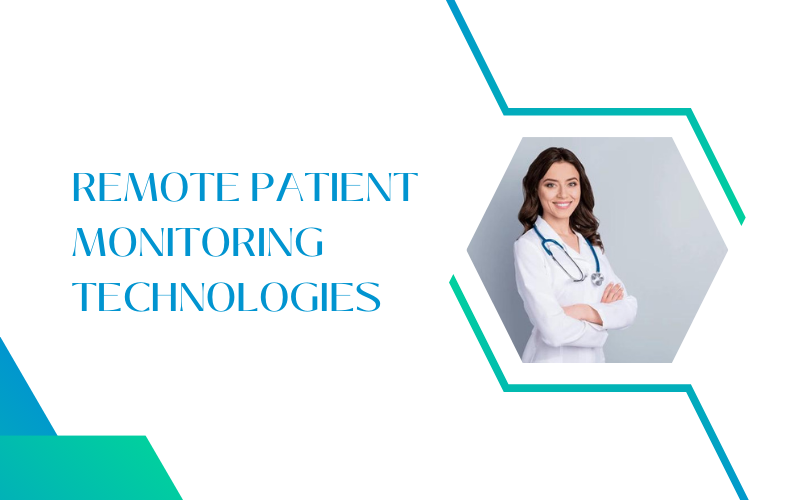Ever thought about how cool it would be if your doctor could keep track of your heartbeat without you having to go see them? Well, guess what? That’s exactly what Remote Patient Monitoring (RPM) does! It’s not some far-off idea from the future – it’s happening right now.
What? You’ve never heard about RPM? Well, not to worry because here we’re going to break down the benefits and types of remote patient monitoring technologies for you in simple terms.
What Is (RPM) Remote Patient Monitoring?
It’s basically a way for doctors to use fancy tech to gather info about you, whether you’re at the hospital or chilling at home.
Imagine you’re chilling at home and suddenly you’re not feeling too great. Instead of rushing to the hospital, you could just use a special device that keeps track of your health, like your heart or blood pressure, from the comfort of your own home. That’s what RPM does – it lets doctors keep an eye on you without you having to make a trip to the hospital every time something feels off.
Why RPM Is Such A Big Deal?
Getting to the hospital can sometimes be a hassle, especially if you live far away. But with remote patient monitoring technologies, distance doesn’t matter anymore. Your doctor can check up on you no matter where you are, whether it’s in the heart of the city or out in the countryside.
But it’s not just about convenience – RPM is a game-changer when it comes to keeping people healthy. By keeping tabs on your health all the time, RPM can catch any problems early on before they become serious. That means fewer trips to the hospital and less stress for you.
And here’s the really cool part; RPM isn’t just for when you’re feeling sick. It can also help you manage long-term health conditions, like diabetes or high blood pressure. Your doctor can use RPM to keep track of your treatment plan. It’s like having your own personal health coach right at your fingertips!
So, yeah, Remote patient monitoring technologies might sound fancy, but it’s really just about making healthcare easier and more accessible for everyone. In the busy schedule, where healthcare can sometimes feel out of reach, remote patient monitoring technologies bring the doctor’s office to you. And that’s pretty amazing.
Types of Remote Patient Monitoring Technologies Include –
Blood Pressure Monitor – Keeps an eye on your blood pressure either by squeezing a band around your arm or by using a wearable gadget.
Glucometer – A nifty device that checks how much sugar is in your blood by pricking your finger for a tiny drop of blood. It gives direct feedback to folks dealing with blood sugar issues.
Pulse Oximeter – This cool gadget measures how much oxygen is in your body without needing to poke you with a needle or draw blood.
Other Wearables – Stuff like smartwatches that track all sorts of data in real-time, like your heart rate, how many steps you’ve taken, and even your heart’s electrical activity (EKG). They make it easy to keep tabs on things like calories burned and workout to help you stay healthy all day long.
Thermometers – These handy devices help keep track of your body temperature to make sure everything’s running as it should.
Scale – Lets you keep an eye on your weight. Helping your progress over time.
The Crucial Role of Remote Monitoring Devices
As we step into the future of healthcare, the importance of remote monitoring devices is clearer than ever. These gadgets are at the heart of remote patient monitoring, changing the game when it comes to taking care of patients.
They let doctors see patient info right aways, no matter where they are, breaking down barriers and making sure distance doesn’t get in the way of good care. With this easy access, doctors can keep an eye on patients’ health continuously, catching any issues early and jumping in with help when needed.
Plus, as these devices get fancier, they’re expected to team up with other cool tech, like Artificial Intelligence (AI) and super smart analytics. This combo is going to take their powers to the next level, turning them into tools for collecting data and analyzing your health from top to bottom.
How AI Makes Remote Patient Monitoring Technologies Even Batter?
You know how cool it is to have your health monitored from afar? Well, let’s talk about making it even cooler with the help of Artificial Intelligence (AI). Yep, that’s right, AI is here to take Remote Patient Monitoring Technologies to a whole new level.
So, what’s the deal with AI? Basically, it’s like having a super smart assistant that can analyze all the data from your monitoring devices in the blink of an eye. It can spot patterns, predict health trends, and even alert your doctor if something seems off.
With AI on board, RPM becomes even more efficient. It helps doctors make quicker decisions, personalize treatment plans, and ultimately, keep you healthier. Plus, it’s all happening behind the scenes, making your healthcare experience smoother and more effective.
In a nutshell, AI is the secret sauce that makes RPM not just good, but great. It’s like having a virtual health buddy who’s always got your back making sure you say on top of your health game.
Last Message
In wrapping up, remote patient monitoring isn’t sci-fi fantasy – it’s happening now and changing healthcare for the better. Picture this: instead of rushing to the doctor’s office every time you feel off, RPM lets you keep tabs on your health from home. It’s not just convenient; it’s a game-changer. Whether you’re in the city or countryside, RPM bridges the gap to your doctor, catching problems early and reducing stress.
And about gadgets? They’re pretty cool too. From blood pressure monitors to smartwatches, they’re like your personal health squad. And with AI in the mix, they become even smarter, spotting trends and alerting your doctor when something’s up. And the best hospital in allahabad is working to empower themselves by using these technologies.








